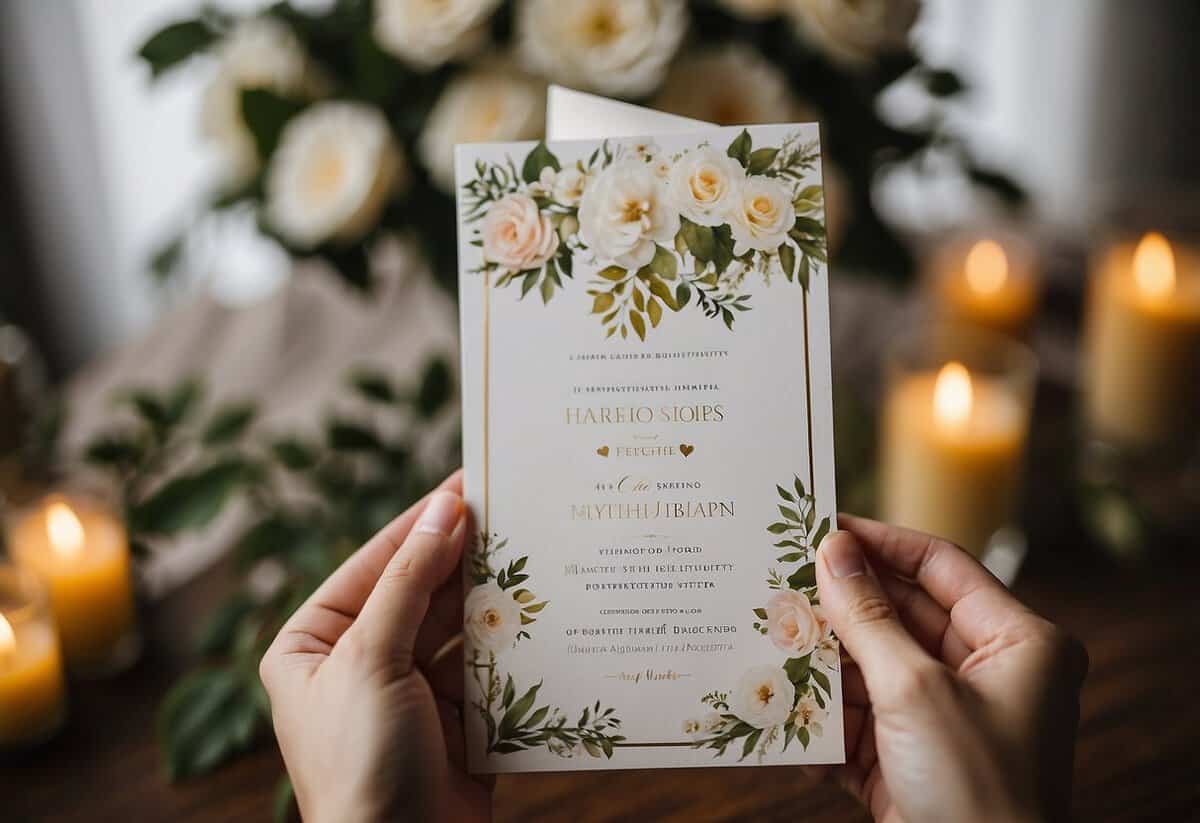Is It Rude Not to Invite Partners to a Wedding? Etiquette Insights
Planning a wedding can be both exciting and stressful, especially when it comes to creating the guest list. One of the common dilemmas is whether to invite your guests’ partners. Is it rude not to invite partners to a wedding? The short answer is, it depends on the circumstances and your relationship with the guest.

If you have limited space or a tight budget, you might consider not inviting plus-ones. For example, if you’re only inviting close friends and family, it’s understandable to keep the guest list short. Be sure to communicate this in a kind and understanding way to avoid hurting anyone’s feelings.
On the other hand, consider the etiquette around such decisions. According to wedding experts, it’s usually expected to invite your immediate family members’ partners and long-term significant others. This gesture shows respect and acknowledges the relationships that are important to your guests. To navigate these tricky waters, it’s helpful to consider each situation individually and strive for a balance between practicality and courtesy.
Understanding Wedding Invitation Etiquette

In wedding planning, it’s important to follow certain rules to make sure everyone understands the details and feels included. This helps you communicate effectively with your guests and avoid any misunderstandings.
The Basics of Wedding Invites
When sending out wedding invitations, make sure to include key pieces of information. This includes the date, time, and location of the wedding. Be clear about whether guests can bring plus-ones.
Sending out your invitations on time is crucial. Your guests need enough time to plan their attendance. Aim to send out invitations at least six to eight weeks before the wedding.
Also, be clear and considerate about the dress code and any special instructions. This helps set the right expectations for your guests and ensures they’re prepared for your big day.
Traditional vs. Modern Invitation Standards
Traditional wedding invitations often follow formal guidelines. This includes using formal language and including reply cards with pre-addressed envelopes. Couples typically send these out via postal mail.
Modern wedding invitations offer more flexibility. Many couples now use digital invitations, which are eco-friendly and customizable. These can be emailed, making the process faster and more efficient.
With traditional invites, etiquette is very strict, whereas modern methods allow for more creativity. You can easily adjust digital invites to suit your wedding’s theme and style.
Deciding between traditional or modern invites depends on your preferences and the tone you want for your wedding. Whether you choose formal or casual, make sure to communicate clearly and thoughtfully with your guests.
Budgeting for Your Special Day

Planning your wedding involves many decisions, especially when it comes to budgeting. Two critical aspects are allocating funds for your guests and managing costs when your guest list grows.
Allocating Funds for Guests
Your wedding budget must account for each guest. Start by making a list of essential attendees, such as close family and friends. When you invite partners and dates, your guest count can quickly rise, which impacts costs.
Consider having tiers for your guest list. For example:
- Close family and friends
- Extended family
- Friends and acquaintances
Each tier helps prioritize who to invite first based on your budget. A venue’s capacity often limits your total headcount. To manage expenses, think about per-person costs for food, drink, and seating.
You might need to make tough choices to stick within budget. Be open with your partner about who gets invited, focusing on those most important to your day.
Managing Costs with a Larger Guest List
Managing a growing guest list can be challenging. More guests mean higher costs. This includes not only food and drink but also additional invitations, favors, and hired staff.
Consider opting for a buffet instead of a plated meal. Buffets can be less expensive and offer variety for guests.
You can also cut costs on decorations by choosing simple and elegant options. DIY projects or flowers in season can be beautiful and budget-friendly.
Explore different venues. Sometimes, non-traditional locations like parks or community halls offer more affordable rates than high-end venues.
Think about having a smaller, more intimate ceremony followed by a larger reception later. This approach can balance the intimacy of your special day with the joy of a big celebration.
Creating Your Dream Wedding Guest List

Choosing who will be at your dream wedding can feel overwhelming. You want to include everyone special without overcrowding or busting your budget.
Deciding on Whom to Invite
Start by considering your wedding budget and venue capacity. You can’t invite more people than your space can hold. List those essential to your wedding day—close relatives, best friends, and mentors. Then, add people who have played important roles in your lives.
Categorize your potential guests into groups like “must-invite” and “maybe”. This helps prioritize who to invite if space or budget become issues. It’s okay to set boundaries. Invite those you genuinely want to share this special moment with.
Balancing Family and Friends
It’s essential to balance family and friends. Begin by writing down close relatives—parents, siblings, and grandparents. Then, extend the list to aunts, uncles, and cousins if space allows. Decide on how distant relatives fit into your plan.
Next, focus on your friends list. Think about friends from different life stages—high school, college, and work. You might want to include friends with whom you’ve shared significant moments or who’ve supported you.
Finding the right mix of relatives and friends ensures a balanced guest list. Make sure both sides of the family feel included. This keeps everyone happy and makes your day even more special. Creating a guest list that reflects your relationships will make your dream wedding unforgettable.
Navigating Family Dynamics and Expectations

When planning your wedding, understanding family dynamics and managing expectations is crucial. Clear communication can help prevent misunderstandings and reduce stress for everyone involved.
Handling Family Members’ Expectations
Family members often have strong opinions about your wedding. They may want to be involved in planning or have their own ideas about who should be invited. Be honest about what you want, but also listen to their concerns.
Having a heart-to-heart conversation early on can establish clear boundaries. This helps to avoid miscommunication and hurt feelings. Explain your decisions and try to find a middle ground when possible.
Creating a planning committee with trusted family members can be useful. Allowing them to handle smaller tasks can make them feel included without compromising your vision.
Addressing Potential Family Drama
Family drama can surface quickly during wedding planning. Disagreements over guest lists, traditions, or other details may arise. It’s important to stay calm and not let emotions take over.
Setting boundaries is key. Politely inform family members that certain issues are not up for debate. This may deflate some tensions.
If conflicts are unavoidable, consider mediation. A third party, like a wedding planner or a family friend, can help keep discussions focused and productive.
Documenting decisions in a shared space, like a Google Doc or wedding app, keeps everyone on the same page. Transparency here can prevent misunderstandings and accusations of favoritism.
Balancing everyone’s expectations while keeping your vision intact is challenging but achievable with patience and open communication.
Additional Wedding Planning Considerations

When planning your wedding, it’s important to think about various aspects that can help make your day special and stress-free.
Second Reception Options
Sometimes, a secondary reception can be a great solution for those who cannot attend the main event. You might consider having a smaller gathering after the wedding.
A second reception can involve casual gatherings, such as a brunch or backyard barbecue. This gives you more time to connect with guests who couldn’t make it to the main reception.
If you have family members or friends living far away, hosting a second reception in their area can be considerate. This makes it easier for them to celebrate with you without the travel hassle.
Key elements to consider include the venue, food, and budget. You might use Zola to manage details and keep track of RSVPs. Ensure the secondary event matches the style and vibe of your primary wedding so that your guests feel the connection between the two events.
Communication via Wedding Website
Communication is crucial in wedding planning, and a wedding website can be a powerful tool. Your wedding website can help keep everyone informed and reduce the number of questions you receive.
Include all important details like date, time, and location of events. You can also embed maps for directions. For out-of-town guests, list recommended hotels, transportation options, and local attractions.
A section for RSVPs is essential. Most platforms, including Zola, offer RSVP management tools so you can easily track responses. You can also update any last-minute changes or important announcements.
Make sure your website is easy to navigate. Use clear headings and ensure the content is concise. Regularly update the website with any new information so your guests can stay informed without any confusion.



